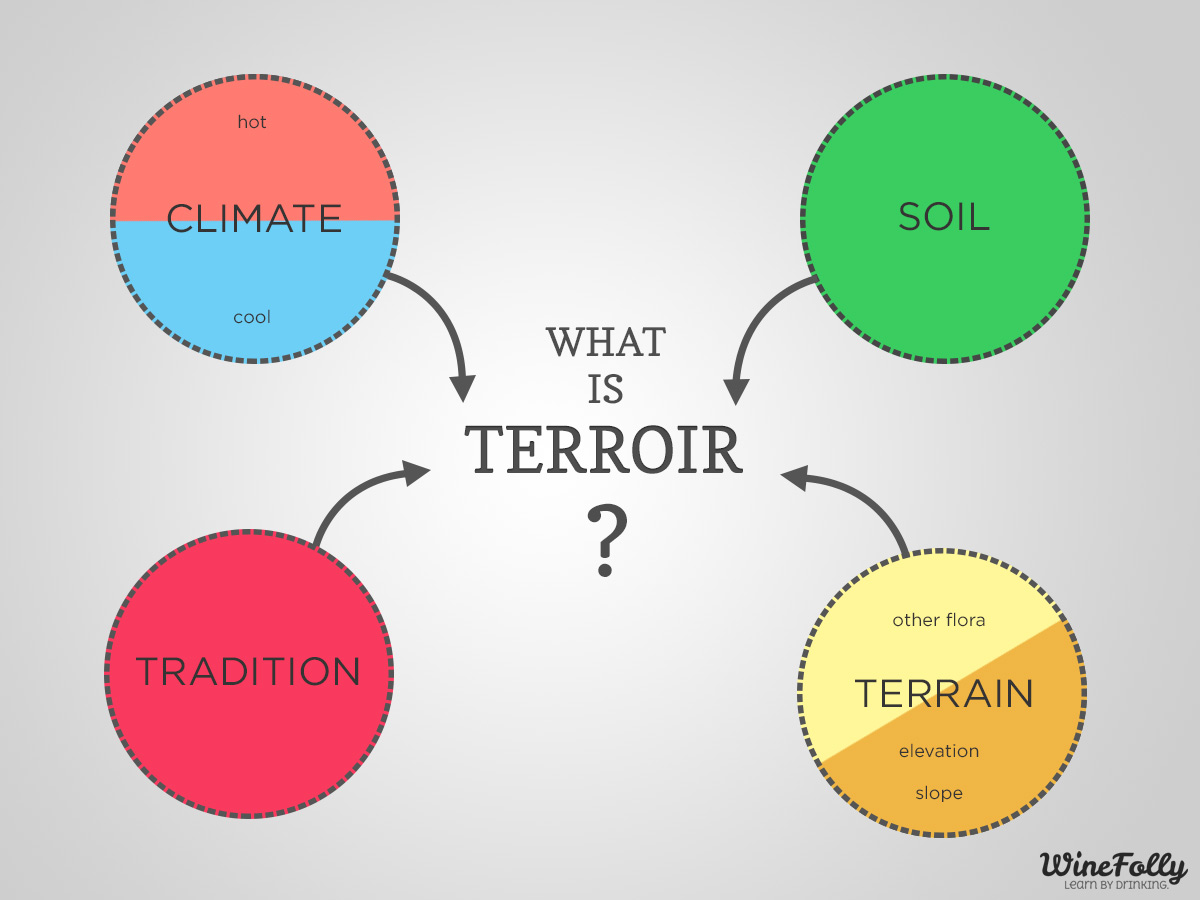Terroir Definition
sounds like “tare WAHr”
Terroir is how a particular region’s climate, soils and aspect (terrain) affect the taste of wine. Some regions are said to have more ‘terroir’ than others.
What is ‘terroir’ and how does it affect the taste of wine?
A Rocky History
‘Terroir’ is one of the most used and least understood wine words. Originally it was associated with earthy notes in many Old World wines. Back in the 1980’s, many of these ‘terroir-driven’ wines were actually affected by wine faults including cork taint and wild yeast growth (brettanomyces). Nowadays, terroir is used to describe practically every wine region (e.g. Napa’s Terroir, Bordeaux’s Terroir, Priorat’s Terroir, Washington’s Terroir, etc.) and it has lost its meaning.
It’s time to know what this overused word really means, because it’s actually kind of useful.
4 Traits of Terroir
-
Climate
Wine regions can be basically divided into two types of climates: cool climate and warm climate. Wine grapes from warmer climates generate higher sugar levels (which produce higher alcohol wines), whereas cooler climate wine grapes generally have lower sugar levels and retain more acidity.
For instance Oakville AVA in Napa Valley receives just a touch more sun and heat year-round than the Médoc in Bordeaux. While both regions produce Cabernet Sauvignon, the Médoc produces Cabernet wines with greater natural acidity because of the weather. -
Soil
There are hundreds of different types of soil, rock and mineral deposits in the world’s vineyards. Most vineyard soils can be sorted into about 5 to 6 different types of soil that affect the flavor of wine. While there is no scientific proof associating the taste of ‘minerality’ to actual minerals in a wine, something does happen. It’s almost as though some types of soils act like a tea-bag for water as it passes through to the vine’s roots.
For instance South Africa is marked by 50 million year old granitic soils. Granite is known for its heat retention and the quality of reducing acidity in high acid wine grapes. Writers have described South Africa’s red wines as graphite-like, gravely and like freshly-wetted concrete. -
Terrain
Believe it or not, altitude is an increasingly important focus for quality vineyards. Besides elevation, things like geological features (mountains, valleys, being located far inland), other flora (plants, microbes and trees) and large bodies of water affect how a wine from a particular region tastes.
For instance Mendoza, Argentina has vineyards around 4,000 feet above sea level. The high elevation gives Malbec heightened acidity due to cool nighttime temperatures. Within Mendoza, the Uco Valley subregion is famous for its high quality age-worthy Malbec. The Uco Valley also happens to have the highest vineyard sites in Mendoza. -
Tradition*
(*only in areas entrenched with a particular winemaking tradition) Traditional winemaking (and vineyard growing) techniques can also contribute to a wine’s terroir. Even though tradition is a human interaction, ancient winemaking methods tend to be highly dependent on the region’s climate, soil and terrain.
For instance In Madeira, it’s traditional to stop fermentation early and fortify a wine by adding brandy and aging it in barrels outside (under the sun). This gives Madeira its classic roasted and nutty flavor.

UPDATE: Microbes Define “Terroir” in Wine
A new study suggests that bacteria and microbes in a region are much more important than we ever thought!
Read on!
